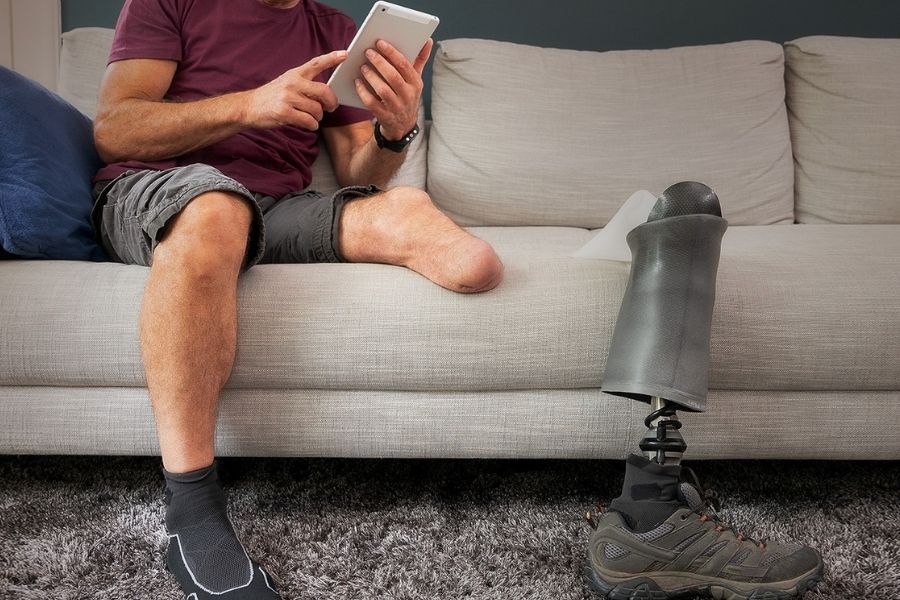These tips are all you need to check your artificial limb and residual limb yourself (and to know when you need to see a specialist)
When was the last time you had a close look at your artificial limb or residual limb? Despite the fact that corona restrictions are gradually being relaxed, getting an appointment with a specialist can still take a very long time. By checking your artificial limb or residual limb yourself, you can form a better idea of whether you can afford to wait or even skip your appointment, or whether you need to see a specialist. In this article, we’ll take you through the steps.
If you wear an artificial limb, it’s very important to keep your residual limb in tip-top condition, even if you had your surgery a long time ago. You may experience skin folds or contracted scars on your residual limb, for example.

1. Use a mirror or take a limbfie
An artificial limb can cause blisters, pressure points and wounds, and it’s important to detect and treat them in time to prevent infections. As you might imagine, that’s something you really want to avoid. Regularly checking your residual limb can be a real help. Make sure that you take a good hard look from all angles, using a mirror if necessary. If you suspect that your residual limb has changed shape, contact your physician to make an appointment. If you’re not sure whether you need an appointment, e-mail a photo of your residual limb - we like calling them limbfies - to your physician. Almost all doctors can be contacted online or by phone for expert advice.
2. Check the parts of your artificial limb
After your residual limb, it’s now time to subject your socket, liner and prosthetic socks to a thorough lookover. Is everything still in one piece? Are there no holes, tears or other defects to be seen? Examine your prosthesis for cracks and strange noises. Is the mechanism still working properly? If you find an issue, contact your O&P professional for advice.
3. Annual checkup
It may be a cliché, but the notion that to prevent is better than to cure still holds true. It’s important that you see your O&P professional for a checkup once a year to make sure that your prosthesis still meets all your needs. If your residual limb has changed, your artificial limb will have to be adjusted accordingly. And if part of your artificial limb is worn, your O&P professional can order you a replacement part.